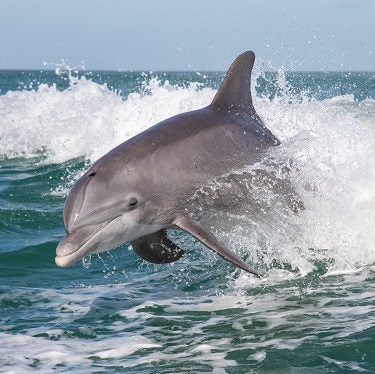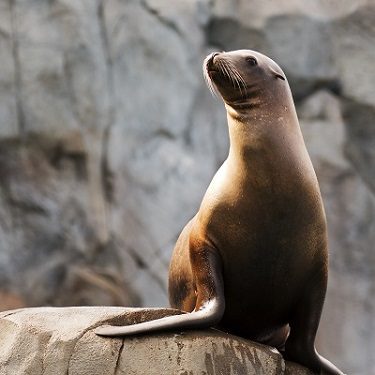Marine Life Encyclopedia
Seabirds
Southern Rockhopper Penguin
Eudyptes chrysocome
Distribution
Sub-polar latitudes of the southern hemisphere
eCOSYSTEM/HABITAT
Nest on rocky shores; feed in coastal to open ocean (pelagic) waters
FEEDING HABITS
Foraging predator
TAXONOMY
Order Sphenisciformes (penguins), Family Spheniscidae (penguins)
Southern rockhopper penguins are small-bodied penguins, reaching heights of about two feet (0.6 m) and weights of only a few pounds. Southern rockhopper penguins have white fronts and black heads and hoods. Their beaks are bright orange, and their eyebrows are bright yellow. At the outer edge of the eyebrows, long yellow feathers extend off the sides of the head.
This species nests along rocky shores on sub-Antarctic islands. Males and females care for the eggs and chicks together. Females typically lay two eggs, but only rarely (and only in certain localities) does the pair incubate both and raise two chicks. Southern rockhopper penguins are foraging predators and excellent swimmers. They feed on krill and other pelagic crustaceans, as well as small fishes and squids. Their primary predators include fur seals and sea lions and also likely killer whales.
Though they have not been hunted and their eggs have not been collected for some time, southern rockhopper penguin populations are decreasing. Some populations have decreased dramatically (more than 90%). Interactions with fisheries targeting other species and changes to Southern Ocean food webs (which may decrease their prey or increase their predators) are possible causes. Invasive species and disease are also both common sources of penguin decline, in general. Conservation scientists now believe this species to be vulnerable to extinction.
A note on taxonomy: there are currently three recognized species of rockhopper penguins, but scientists do not agree on which of these are valid. Some consider the southern, northern, and eastern rockhopper penguins to be three distinct species. Others believe that the southern and eastern rockhoppers are actually the same species. Still others consider all three to be a single species. The result of this scientific debate has conservation implications because global population sizes change considerably if the species are divided and/or lumped together.
Engage Youth with Sailors for the Sea
Oceana joined forces with Sailors for the Sea, an ocean conservation organization dedicated to educating and engaging the world’s boating community. Sailors for the Sea developed the KELP (Kids Environmental Lesson Plans) program to create the next generation of ocean stewards. Click here or below to download hands-on marine science activities for kids.
Additional Resources:
Get Involved

Donate Today
SUPPORT OUR WORK TO PROTECT THE OCEANS BY GIVING TODAY
With the support of more than 1 million activists like you, we have already protected nearly 4 million square miles of ocean.

TAKE ACTION NOW
Support policy change for the oceans
Decision-makers need to hear from ocean lovers like you. Make your voice heard!

VISIT OUR ADOPTION CENTER
SYMBOLICALLY ADOPT AN ANIMAL TODAY
Visit our online store to see all the ocean animals you can symbolically adopt, either for yourself or as a gift for someone else.

DOWNLOAD OCEAN ACTIVITIES
HELP KIDS DISCOVER OUR BLUE PLANET
Our free KELP (Kids Environmental Lesson Plans) empower children to learn about and protect our oceans!




